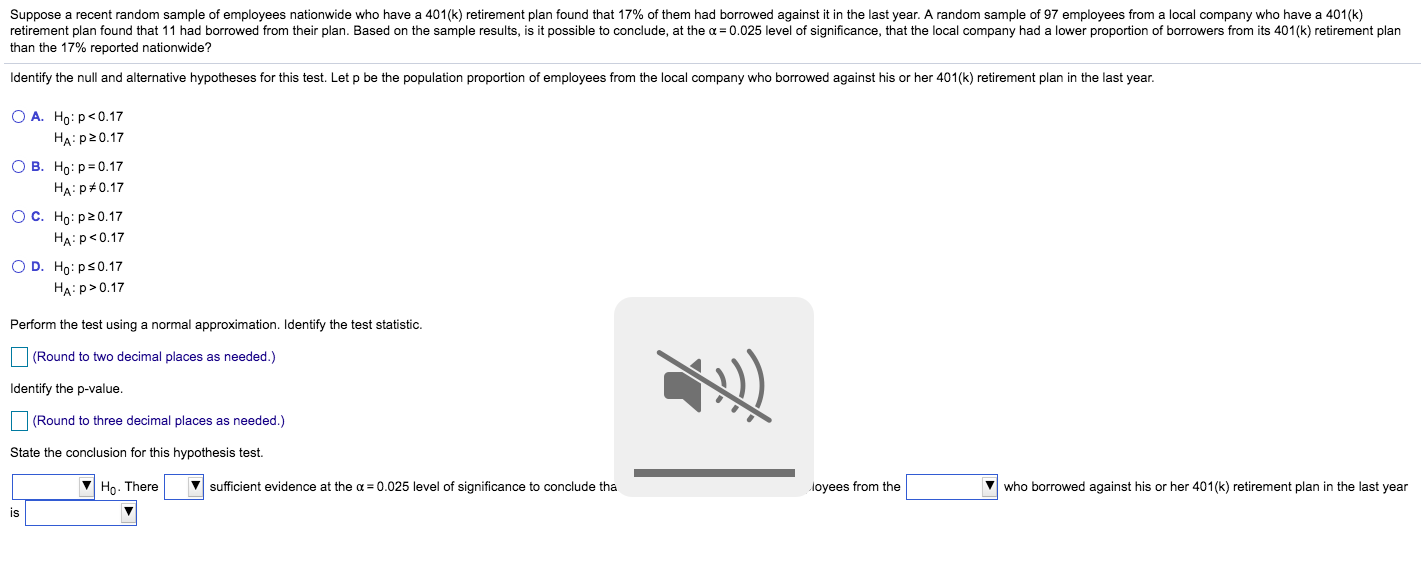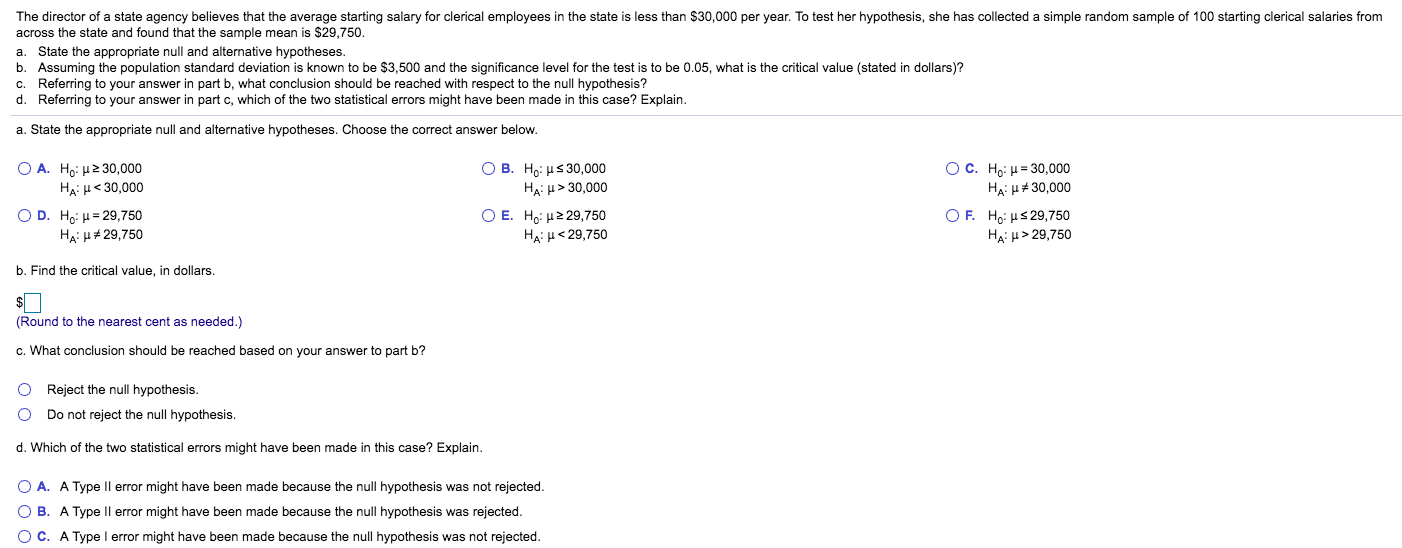Part 1
Suppose a recent random sample of employees nationwide who have a 401(k) retirement plan found that 17% of them had borrowed against it in the last year. A random sample of 97 employees from a local company who have a 401(k) retirement plan found that 11 had borrowed from their plan. Based on the sample results, is it possible to conclude, at the a = 0.025 level of significance, that the local company had a lower proportion of borrowers from its 401(k) retirement plan than the 17% reported nationwide? Identify the null and alternative hypotheses for this test. Let p be the population proportion of employees from the local company who borrowed against his or her 401(k) retirement plan in the last year. O A. Ho: P 0.17 Perform the test using a normal approximation. Identify the test statistic. (Round to two decimal places as needed.) Identify the p-value. (Round to three decimal places as needed.) State the conclusion for this hypothesis test. Ho. There sufficient evidence at the o = 0.025 level of significance to conclude tha loyees from the who borrowed against his or her 401(k) retirement plan in the last year isThe director of a state agency believes that the average starting salary for clerical employees in the state is less than $30,000 per year. To test her hypothesis, she has collected a simple random sample of 100 starting clerical salaries from across the state and found that the sample mean is $29,750. a. State the appropriate null and alternative hypotheses. b. Assuming the population standard deviation is known to be $3,500 and the significance level for the test is to be 0.05, what is the critical value (stated in dollars)? C. Referring to your answer in part b, what conclusion should be reached with respect to the null hypothesis? 1. Referring to your answer in part c, which of the two statistical errors might have been made in this case? Explain. a. State the appropriate null and alternative hypotheses. Choose the correct answer below. O A. Ho: H 2 30,000 O B. Ho: H S 30,000 O C. Ho: H = 30,000 HA: H 30,000 HA: H # 30,000 O D. Ho: H = 29,750 O E. Ho: H 2 29,750 OF. Ho: HS 29,750 HA: H # 29,750 HA: H 29,750 b. Find the critical value, in dollars. $ (Round to the nearest cent as needed.) c. What conclusion should be reached based on your answer to part b? O Reject the null hypothesis. O Do not reject the null hypothesis. d. Which of the two statistical errors might have been made in this case? Explain. O A. A Type II error might have been made because the null hypothesis was not rejected. O B. A Type II error might have been made because the null hypothesis was rejected. O C. A Type I error might have been made because the null hypothesis was not rejected








